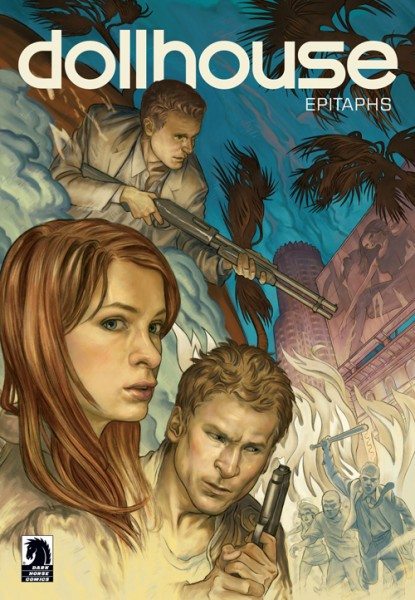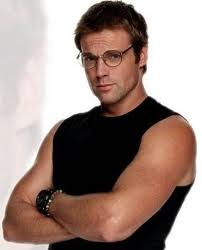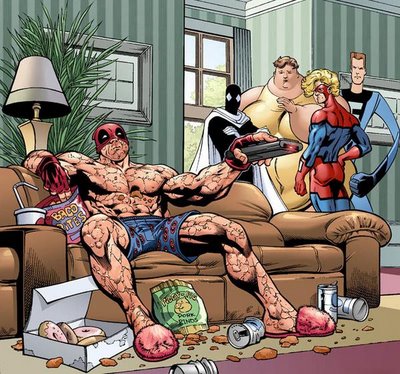
Tie-in comics are aimed at both established and potential fans. They can act as publicity, so to speak, by crossing mediums to expose the brand (or story, or characters) to an audience that may have overlooked or missed it initially. In regards to the ‘original’ fans of the franchise, is has a more multifaceted purpose: it can be considered merchandise, something tangible and collectible. It can be an addition to the lore or backstory of the series and its characters (something along the lines of DLC, in that some fans will be less interested in procuring it) or it can be used as a series continuation, or bridge.
TV shows which are quite character-driven can be a huge challenge to translate into comics – not only does the art have to toe the line between the characters’ personality and the actors’ appearance, but the writing has to be spot-on. Chances are if the reader can’t hear that actors’ voice in their head reading the words on the page, they won’t be interested in turning to the next one.
Game tie-in comics can more easily introduce new characters, or expand on the people and mythology that was only briefly touched on in the game. This offers a lot more flexibility for the comic’s team and means they can be a bit more creative. There’s a sort of parallel to DLC in game comics – some fans won’t have a bar of them, they’re not essential to canon, but they can be extremely enjoyable if done right. Tie-in comics are a fabulous way to bypass the budget necessary for special effects, actors and a studio – for those brands that started out in life as a game, movie or TV series. Writing a comic script is an extremely different process to screenplays, novels and game plot but it can be learnt. It’s a much better method to use for storytelling with TV/movies and games than the traditional spin-off novel, as it can then retain some aspect of the visual dynamics. Creating a comic book can also have a much shorter production time than doing a movie or game.
Speaking of novels, there have been a lot of graphic novel reproductions of print books lately. This is a great way to explore the environment of the original books, since it’s a much more visual medium. It’s a nice opportunity to add new storylines to the book universe, but again, the script writer has some pretty tight confines to work with.
Tie-in comics are an excellent introduction to comics proper, for those people who never discovered the medium, or those who sort of forgot about it after puberty. Most of the tie-ins I myself have read have been quite good, but some special mentions have to be made – I fully understand the fact that some artists don’t have the luxury of working purely on jobs they are passionate about, drawing things/people that they love. As an artist, especially a burgeoning one, sometimes you just have to work for the money. But that is no excuse for not doing your research when it comes to drawing important and well-known characters! There’s a huge difference between artistic interpretation, and just plain ol’ making things up. When your art, especially on the cover, looks nothing like the original characters you will lose a lot of original fans.
Example: Dr. Daniel Jackson from the long-running TV series Stargate SG-1, played by Michael Shanks.
The cover of Dynamite‘s comic series Stargate: Daniel Jackson ‘featuring’ the very same character.
That comic was released in mid-2010 and I’m still not over it.
Moving right along, I personally tend to look more favourably on tie-ins where one of the original creators is involved – maybe it’s just me, but I tend to view some tie-ins without original team involvement to be at best, fanon, and at worst, an attempt to cash in on a successful franchise. Don’t let my cynicism deter you – I enjoy a wide range of tie-in comics and I think they’re a great addition to the medium, and to many different universes. I’m just wary of their potential to detract from the original product.
Speaking of originals, there is one final type of tie-in comic I have to mention, and I’ll call these “extensions”. Extensions are written with or by one of the original creators of the show/game/book and are designed as a bridge, or continuation of the original piece. Extensions are full of Joss Whedon books. As a general rule, because the creators are involved, the art is very true to the original piece. I have a soft spot for extension books (and Joss Whedon) because they mean that good stories last longer, and you have more time with beloved characters. I also got into the wonderful world of spandex, splash pages and sequential goodness because of that first Firefly comic book I bought.
Please feel free to weigh in in the comments! Tie-ins, yay or nay? Any to recommend or to warn people against?


















